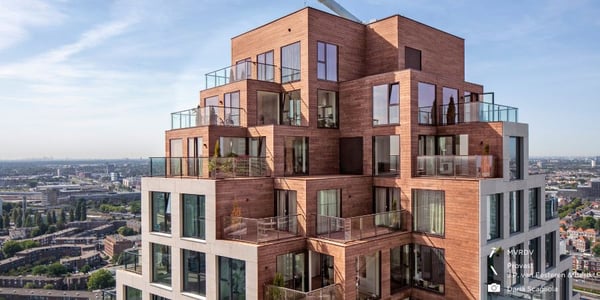The Need for Sustainable Exterior Cladding
Sustainability is a top priority for architects, designers, and builders seeking environmentally responsible solutions. As demand for sustainable cladding materials grows, MOSO® Bamboo offers an innovative and eco-friendly alternative that meets the highest standards of durability, aesthetics, and performance. In this blog, we explore why MOSO® Bamboo X-treme® and Bamboo N-durance® cladding are the ideal choices for sustainable exterior cladding projects.
Why Bamboo is the Ultimate Sustainable Cladding Material
MOSO® bamboo is a rapidly renewable resource that can grow up to 1 meter per day, reaching maturity in just 4-5 years. This makes it one of the most sustainable cladding options available.
Key Sustainability Benefits:
- Rapid growth & renewable: Bamboo regenerates quickly without the need for replanting.
- Low environmental impact: Sustainably sourced and processed with minimal waste.
- Locks high amounts of CO2: MOSO® Bamboo products capture and store more CO2 than is emitted during production. Learn more about bamboo’s carbon storage.
- Certified sustainability: Meets rigorous standards, including LEED, BREEAM, and EPD certification. More on MOSO® sustainability.
Durable and High-Performance Cladding Options
1. Bamboo X-treme® Cladding
Designed for exterior applications, Bamboo X-treme® undergoes a Thermo-Density® treatment that enhances its durability and weather resistance.
- High stability: Minimal expansion and contraction, ideal for varying climates.
- Fire-resistant: Achieves Fire Resistance Class B without additional treatment.
- Low maintenance: Naturally resistant to fungi, termites, and moisture.
- Sleek, modern look: Deep brown colour that ages to an elegant silver-grey.
2. Bamboo N-durance® Cladding
Bamboo N-durance® offers a natural, warm aesthetic with excellent weather resistance, making it a perfect fit for eco-friendly architecture.
- Sustainably sourced: Produced using a special impregnation process for increased durability.
- Natural look: Rich caramel tones that retain their warmth over time. •
- Easy installation: The tongue-and-groove profile offers the possibility of installation with a continuous finish.
Discover Bamboo N-durance® cladding
The Advantages of Choosing MOSO® Bamboo Cladding
Architects and designers looking for sustainable wood cladding alternatives will find MOSO® Bamboo a great choice. Key benefits include:
- Eco-friendly and sustainable:A rapidly renewable and responsibly sourced material.
- Long-lasting and durable:Comparable to high-quality hardwoods in strength and lifespan.
- Cost-effective:Lower maintenance requirements reduce long-term costs.
- Aesthetic flexibility:strong> Available in modern and traditional styles to suit any design vision.
Request a Sample or More information
Considering MOSO® Bamboo for your next sustainable building project? We provide samples and expert consultation to help you find the right solution.
Request a free sample or more information
By choosing MOSO® Bamboo cladding, you invest in a material that is not only aesthetically remarkable but also environmentally friendly. Whether you prioritize sustainability, performance, or design flexibility, MOSO® Bamboo offers a long-lasting, high-quality solution for your exterior cladding needs.
Interested in learning more about MOSO® Bamboo X-treme® cladding?
Get our brochure to explore all the possibilities for your next project.




.jpg?width=170&height=113&name=HubSpot%20Blog%20CTA%20(1).jpg)
-3.jpg)


